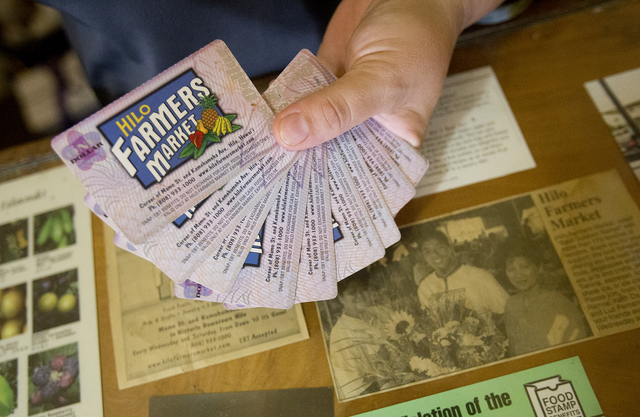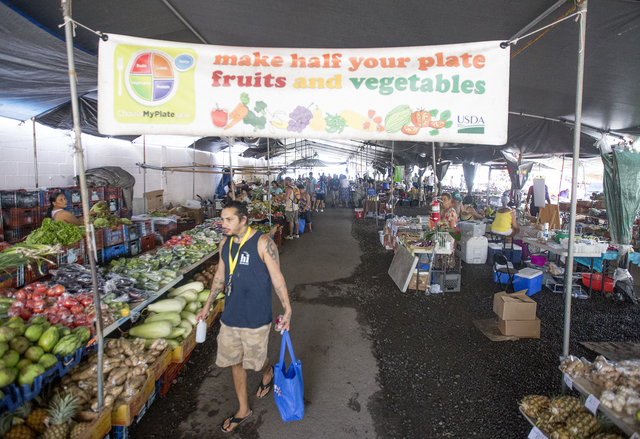It’s no surprise that participation in the federal Supplemental Nutritional Assistance Program increased after the recession began in 2008. But at the same time, more people have also chosen to use their food stamp benefits outside of the grocery store.
It’s no surprise that participation in the federal Supplemental Nutritional Assistance Program increased after the recession began in 2008. But at the same time, more people have also chosen to use their food stamp benefits outside of the grocery store.
A June report from the U.S. Department of Agriculture found that since 2008, nationwide SNAP redemptions at farmers markets and farm stands have increased sixfold, totalling $18.8 million in the last fiscal year.
The increase is partially because of increased investment from the USDA in promoting the markets as a smart resource for accessing healthy food on small budgets.
Eight markets on the Big Island currently accept SNAP benefits, according to the Kohala Center in Waimea. Two new markets, one in Honokaa and one in Waimea, are expected to open before September. Both will accept SNAP.
“It’s a great boon to families that use SNAP to increase their fresh fruit and fresh vegetable consumption,” said Donna Mitts, program coordinator at the Kohala Center. “I think their SNAP dollar goes farther at a farmers market.”
Just as important as program promotion is implementation.
In 2012, the Kohala Center helped six Big Island markets set up Electronic Benefit Transfer systems, using a grant from the USDA Farmers Market Promotion Program. With EBT, benefits from the state are put on a card similar to a debit card. Though EBT is easy to use at grocery stores, it’s harder to equip individual vendors at farmers markets with a card-swipe system.
When Kohala Center staffers began working with the six markets to create more EBT access, they had a pioneering model in their own backyard. The Hilo Farmers Market has been accepting EBT since 1998, when it was the first market in the entire country to test and implement a central EBT system.
“Our little Hilo market,” Hilo manager Keith De La Cruz said.
Instead of going vendor-by-vendor to use their SNAP benefits, customers first go to De La Cruz’s office with their EBT cards and swipe them to receive paper scrip “dollars” valid only at the Hilo market.
“It makes it really easy to handle,” De La Cruz said. “It’s easy to carry, versus tokens.” Customers can get a refund on their card for any funds not used.
About 50 percent of the market’s more than 200 vendors currently accept SNAP, De La Cruz said. The benefits cannot be used on items such as ready-to-eat hot meals.
De La Cruz has managed the market since 1999, and said Hilo was on track with the national trend in farmers market shopping. He partially attributed this to more general interest in eating healthier foods, but said the recession was the greatest factor.
“After that, 2009, that was when it started being a greater influx. That’s when I started noticing it,” De La Cruz said.
SNAP accessibility has broader implications than the inherent benefits of more people eating healthier food.
“Just as important to me is that is supports our local farmers,” Mitts said.
One of the markets the Kohala Center assisted in 2012 was the Makuu Farmers Market in Puna. Participation has increased each year since the program was implemented, Maku‘u treasurer and SNAP sales coordinator Hidi Boteilho said in an email.
The market now processes more then $250,000 in EBT benefits each year.
“They have an amazing amount,” Mitts said.
Email Ivy Ashe at iashe@hawaiitribune-herald.com.




